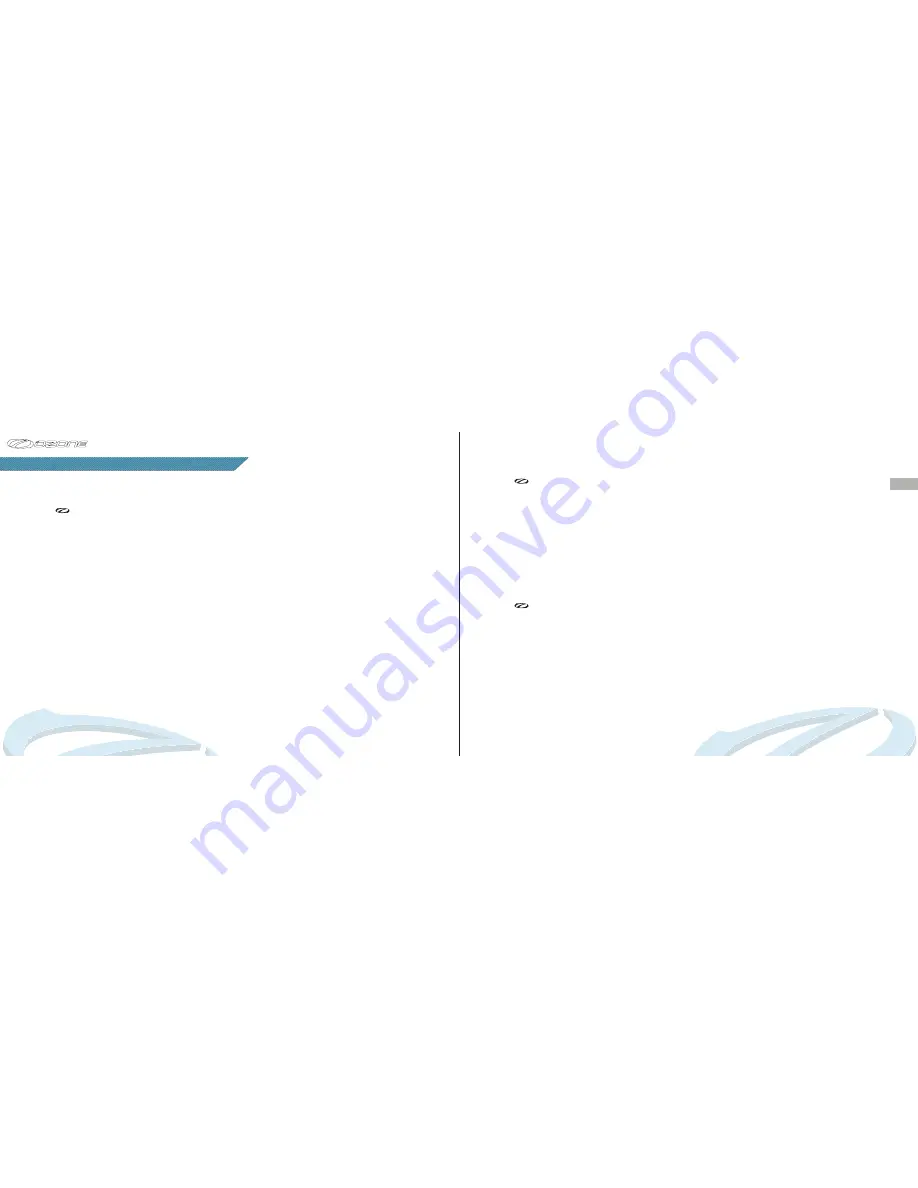
ADVANCED FLIGHT TECHNIQUES
EN
13
12
Ozone would like to remind you that the following manoeuvres should be learnt under the supervision of
a qualified instructor and always used with caution. Never forget that properly analysing the conditions
before launch will help avoid the need to use these techniques.
Big Ears
Folding in the wingtips increases the sink rate without radically changing the airspeed. This is useful for
staying out of cloud or descending quickly through the lift band of the hill, for example when top landing.
To pull Big Ears, keep hold of your brake handles and take the outermost A-line on each side, then pull out
and down (preferably one at a time) until the wingtips fold under. The Outer A line is attached to the Baby
A riser, making identification and use of the big ear system easier. The size of the Big Ears can be adjusted
by pulling more line, or reaching higher up the line. For directional control while using the Big Ears, you
should use weight shift. To reopen the ears, release both A lines at the same time. To help reinflation,
brake gently one side at a time until tips regain pressure. Avoid deep symmetric applications of the brake
as this could accidently induce parachutal or full stalls.
You may use Big Ears for the final landing approach but they should be released before making the final
flare. Ozone advise to not use this technique in turbulent or windy conditions due to the reduced ability to
fly actively and the risk of an inadvertent stall whilst descending through the wind gradient.
Once the big ears are engaged you can further increase the sink rate by pushing on the accelerator bar,
however NEVER try to pull the Big Ears in if the accelerator is already pushed. The lower angle of attack
and the act of deflating the tips can lead to a major deflation. Always make the Big Ears first and then
apply the speed bar.
Whilst it is possible to enter a spiral dive whilst holding in Big Ears, the high forces applied to the lower
lines could exceed the breaking strain of the lines leading to equipment failure!
Ozone strongly recommend to NOT perform Spiral Dives with Big Ears engaged.
IMPORTANT
Induce Big ears one
side at a time.
NEVER
induce Big
Ears in accelerated
flight, this can lead
to a major deflation.
Always pull the Big
Ears first and then
apply the speed bar.
DO NOT
perform spiral
dives with Big Ears
engaged.
B-Line Stall
B-stall is for fast descents in emergency situations only. It is faster and safer to lose altitude with a spiral
dive than a B-stall.
To initiate the B-stall, keep the brakes in your hand and take hold of both the B risers, or place your fingers
between the lines above the maillons. As you pull the B-lines down the airflow over the wing is broken
and the glider loses its forward speed but remains open with a reduced cord. You can descend at around
6 m/s.
To exit the B-stall the B-risers should be released symmetrically and in one smooth, progressive motion.
The glider will resume normal forward flight without further input. Check you have forward flight again
before using the brakes.
If you pull too much B-line the glider may horseshoe and move around a lot. If this occurs, slowly release
the B lines until the wing stabilises or simply exit the B line stall by immediately release the B risers. Do not
attempt to maintain a B line stall that is not stable.
Spiral Dives
If you turn your glider in a series of tightening 360’s it will enter a spiral dive. This will result in rapid height
loss. To initiate a spiral, look and lean in to the direction you want to go, then smoothly pull down on the
inside brake. The Alpina 3 will first turn almost 360 degrees before it drops into the spiral. Once in the
spiral you should re-centre your weight shift and apply a little outside brake to keep the outer wing tip
pressured and inflated.
Safe descent rates of more than 8m/s (1600 ft/min approx.) are possible in a spiral dive, but at these rates
the associated high speeds and g-forces can be disorientating. Always pay particular attention to your
altitude. To exit the spiral dive, ensure your weight shift is in a centred position and then smoothly release
the inside brake. As the Alpina 3 decelerates allow it to continue to turn until enough energy is lost for it to
return to level flight without an excessive climb and surge.
IMPORTANT
The pitching movement
on exiting the B stall is
small but necessary.
We recommend you do
not brake the glider
until you are sure that
the glider is flying
properly again.
IMPORTANT
Always be prepared
to pilot the wing out
of a spiral dive. Use
opposite weight shift
and apply enough
outside brake to
stop the wing from
spiralling.
Содержание Alpina 3
Страница 1: ...Pilots Manual...
Страница 2: ......
Страница 20: ...1258 Route de Grasse Le Bar sur Loup 06620 France...

































